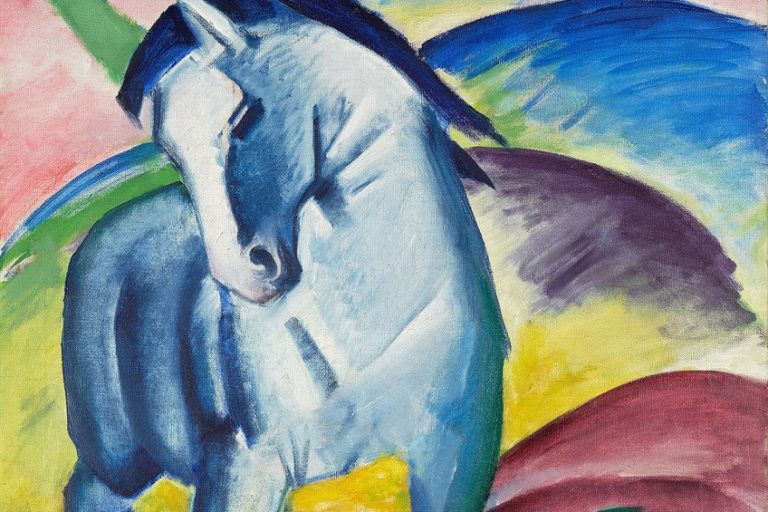“Target with Four Faces” by Jasper Johns – Artistry in Aim
Jasper Johns’ Target with Four Faces is an iconic artwork that epitomizes the artist’s groundbreaking approach to American modern art. Created in 1955, this seminal piece showcases Johns’ fascination with everyday symbols and his exploration of the boundaries between representation and abstraction. The target motif, rendered with bold colors and precise brushwork, invites viewers to delve into questions of perception, identity, and cultural symbolism. Target with Four Faces not only heralded Johns’ emergence as a leading figure in the Pop Art movement but also challenged conventional notions of artistic subject matter, paving the way for new avenues of artistic expression in the 20th century.
Key Takeaways
- This artwork combines a familiar target image with human faces to create a thought-provoking piece.
- The use of mixed media and innovative techniques was a departure from abstract painting norms of the 1950s.
- Target with Four Faces continues to be a significant work in contemporary art history.
Historical and Cultural Context
| Artist | Jasper Johns (1930 – Present) |
| Date Created | 1955 |
| Medium | Encaustic on newspaper and cloth over canvas |
| Genre | Pop Art |
| Period/Movement | Neo-Dada |
| Dimensions (cm) | 66 x 66 |
| Series/Versions | Part of the Target series by Jasper Johns |
| Where Is It Housed? | The Museum of Modern Art, New York City, United States |
| What It Is Worth | Estimated at $80-100 million (value based on recent market trends and historical significance) |
Jasper Johns’ Target with Four Faces, created in 1955, is a compelling piece that challenges the norms of contemporary art. This artwork stands out due to its unique use of a familiar target image combined with four lifelike, plaster-cast faces. This blend of realism and abstraction invites viewers to question what they see and consider the deeper implications of targets and human identity. Johns’ innovative use of encaustic, newspaper, and cloth over canvas, topped with plaster faces, marked a departure from purely abstract painting prevalent at the time.

The faces partially hidden above the target add an intriguing layer of mystery and human emotion to an otherwise impersonal symbol. This deliberate juxtaposition reflects the complex interplay between recognizable symbols and personal identity in American culture. Displayed in major institutions like MoMA and the Whitney Museum, Target with Four Faces remains significant in art history. Its ability to evoke thought and elicit varied interpretations underscores its lasting impact and Johns’ influence on modern art. The artwork’s relevance today speaks to its groundbreaking approach and enduring legacy.
Influence of Pop Art and Abstract Expressionism
Jasper Johns was influenced by Abstract Expressionism, but he found his unique voice through the emergent Pop Art movement. While Abstract Expressionism, represented by artists like Jackson Pollock, focused on spontaneity and personal expression, Pop Art emphasized recognizable imagery from popular culture. Johns’ use of common symbols such as targets and flags pointed to Pop Art’s embrace of everyday objects.
Yet, he also adopted Abstract Expressionist techniques, incorporating bold colors and textures into his work.
This blend resulted in pieces that were visually striking and intellectually engaging. His technique of using encaustic—a mixture of pigment and hot wax—further distinguished his style. This method created a textured, layered surface that captured both the physical and conceptual depth of his subjects.
Relationship With Contemporary Artists
Johns’ relationship with contemporary artists notably shaped his work. Robert Rauschenberg, a close friend, played a crucial role. They influenced each other’s techniques and themes, often exploring the boundaries between art and everyday life. Rauschenberg’s competitive spirit and innovative approaches spurred Johns to push his own boundaries. John Cage, an avant-garde composer, also impacted Johns’ approach to art. Cage’s ideas about chance and the integration of art with everyday life resonated with Johns.

Their interactions led Johns to experiment more boldly with his materials and subjects. Johns’ association with influential dealer Leo Castelli helped him gain significant exposure. Castelli’s gallery became a hub for avant-garde artists, further embedding Johns in the vibrant artistic community of the time. Through these relationships and cultural influences, Jasper Johns’ Target with Four Faces emerged as a groundbreaking work that bridged movements and defied conventional artistic norms.
Artistic Elements and Style
Jasper Johns’ Target with Four Faces uniquely merges diverse artistic techniques and symbolic elements, reflecting his innovative approach to art. The following subsections break down the description and analysis, symbols and numbers used, and the exploration of specific techniques.
Description and Analysis
Target with Four Faces features a target pattern with concentric circles, painted using the encaustic technique, which involves applying hot wax mixed with pigments. On top of this target, Johns placed four plaster cast faces, adding a dimensional aspect to the piece. The combination of these elements produces a striking contrast.
By juxtaposing realistic plaster faces against a more abstract target, Johns creates a piece that challenges traditional boundaries.
Use of Symbols and Numbers
The target itself is a recurring symbol in Johns’ work, representing both precision and repetition. The concentric circles can be seen as symbols of focus or meditation. The four faces add an element of human identity and mystery. Each face is identical, perhaps signifying uniformity and anonymity. The number four is significant, often associated with structure and stability. This work pushes viewers to interpret these symbols in their context.

Exploration of Encaustic and Collage Techniques
Johns uses encaustic, an ancient painting technique where colored wax is heated and applied to a surface. This gives the target a unique texture and luminosity. For the faces, Johns used plaster casts, a method that adds depth and texture. He combined these with his encaustic background to explore new dimensions.
This blend of painting and sculpting techniques sets Johns apart in the abstract art world, providing a tactile and innovative visual experience.
Legacy of Target with Four Faces Today
Target with Four Faces retains significant importance within the art world. Jasper Johns’ innovative incorporation of everyday symbols such as targets, flags, and numbers has influenced numerous artists. His technique of employing encaustic, a wax-based paint, not only introduced texture and depth to his creations but also contributed to their enduring appeal. The target motif from this artwork has been referenced across diverse media, ranging from graphic design to fashion. The high prices fetched by Johns’ works, including Target with Four Faces, underscore their lasting value and artistic significance. As a result, this piece continues to serve as a source of inspiration and education for artists and enthusiasts alike.

Jasper Johns’ Target with Four Faces remains a testament to his innovative vision and lasting impact on the art world. Through this iconic artwork, Johns redefined the boundaries of artistic representation, merging elements of everyday imagery with profound conceptual depth. The enduring appeal of Target with Four Faces lies not only in its visual impact but also in its ability to provoke contemplation on the nature of symbols, identity, and the intersection of art and society. As a cornerstone of American modern art, this piece continues to inspire generations of artists and viewers alike, solidifying Jasper Johns’ legacy as a pioneer of artistic innovation.
Frequently Asked Questions
What Is the Symbolism Behind the Target with Four Faces Artwork?
Jasper Johns’ Target with Four Faces combines everyday objects with deeper meanings. The target symbolizes focus and precision. The faces add a human element, prompting viewers to think about identity and perception. This mix of the abstract and the concrete is a key feature in Johns’s work.
How Does Target with Four Faces Differ from Jasper Johns’ Other Target-Themed Paintings?
Unlike other target paintings by Johns, Target with Four Faces includes plaster casts of human faces. This adds a three-dimensional aspect to an otherwise two-dimensional painting. While other target artworks focus on the target itself, this piece integrates human elements, making it stand out.
What Techniques Did Jasper Johns Employ in Creating Target with Four Faces?
Johns used encaustic, which is a mixture of pigment and hot beeswax. Encaustic allows for rich texture and durability. He also used plaster casts for the faces, adding a sculptural quality to the piece. These techniques combine to create a unique and lasting artwork.
What Is the Significance of the Faces in Jasper Johns’ Target with Four Faces?
The faces in Target with Four Faces add a layer of mystery and depth. They are based on the same model and were made over several months. This repetition of the same face brings attention to individuality and the passage of time, themes often explored in Johns’s work.
Isabella studied at the University of Cape Town in South Africa and graduated with a Bachelor of Arts majoring in English Literature & Language and Psychology. Throughout her undergraduate years, she took Art History as an additional subject and absolutely loved it. Building on from her art history knowledge that began in high school, art has always been a particular area of fascination for her. From learning about artworks previously unknown to her, or sharpening her existing understanding of specific works, the ability to continue learning within this interesting sphere excites her greatly.
Her focal points of interest in art history encompass profiling specific artists and art movements, as it is these areas where she is able to really dig deep into the rich narrative of the art world. Additionally, she particularly enjoys exploring the different artistic styles of the 20th century, as well as the important impact that female artists have had on the development of art history.
Learn more about Isabella Meyer and the Art in Context Team.
Cite this Article
Isabella, Meyer, ““Target with Four Faces” by Jasper Johns – Artistry in Aim.” Art in Context. July 5, 2024. URL: https://artincontext.org/target-with-four-faces-by-jasper-johns/
Meyer, I. (2024, 5 July). “Target with Four Faces” by Jasper Johns – Artistry in Aim. Art in Context. https://artincontext.org/target-with-four-faces-by-jasper-johns/
Meyer, Isabella. ““Target with Four Faces” by Jasper Johns – Artistry in Aim.” Art in Context, July 5, 2024. https://artincontext.org/target-with-four-faces-by-jasper-johns/.











